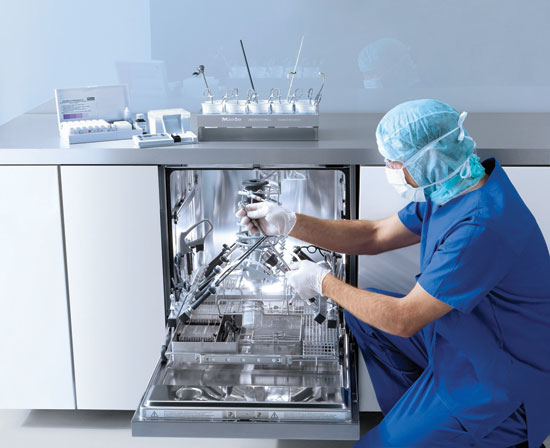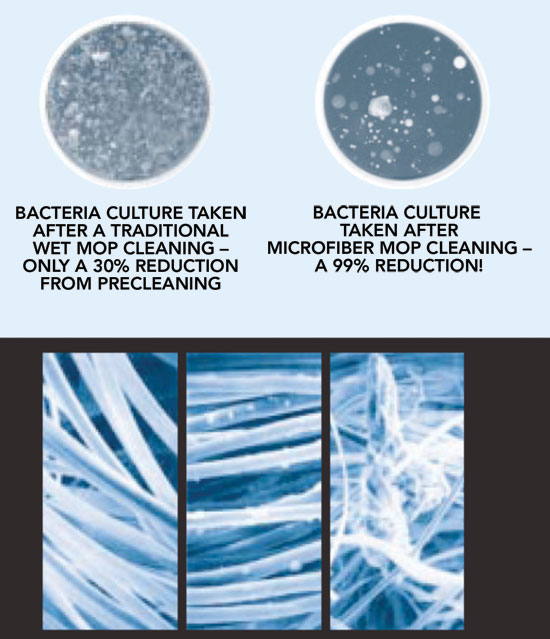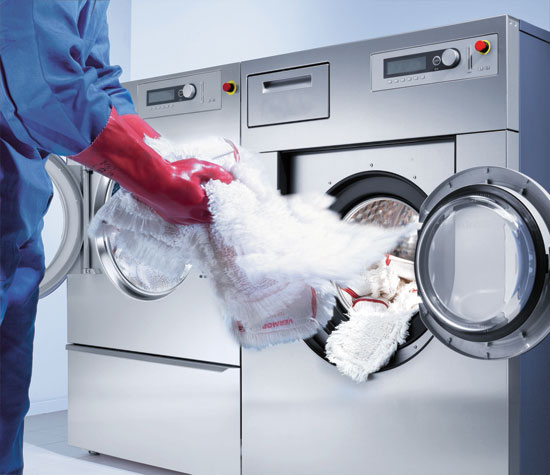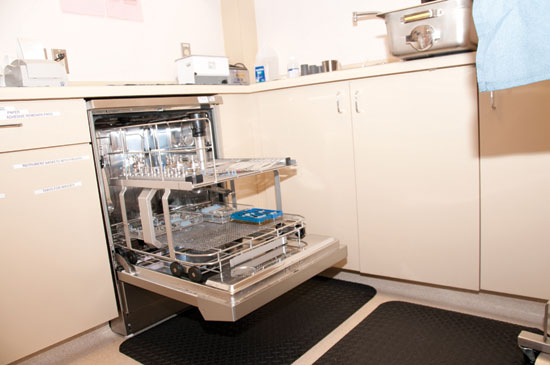Shifts in Healthcare Design Create Demand for New Products
Washer-Disinfectors
Eighty percent of hospitals are planning outpatient expansion in the next two years. There has also been a significant increase in the number of outpatient ambulatory surgery centers since 2006. With the introduction of the Affordable Care Act and economic upturn, IBISWorld, a provider of industry research, predicts an acceleration of growth in the next five years. Over 90 percent of the 6,000-plus centers currently in the U.S. are for-profit. Most frequently performed procedures are cataract surgeries, followed by endoscopies and colonoscopies. The greatest growth in outpatient procedures, however, has been in cosmetic plastic surgeries with 15.1 million performed in 2013—many of which take place in the expanding number of cosmetic surgery centers across the country.

Photo courtesy of Miele Professional
Example of under-counter washer-disinfector can disinfect a wide variety of surgical instruments.
With the increasing volume of freestanding surgery facilities—and publicized occurrences of HIV and hepatitis B and C infections due to inadequate processing of instruments—it is beneficial for providers and design professionals to specify effective washing and disinfecting systems. Particularly since the increase in popularity of minimally invasive surgery has led to the use of many complex instruments that are more difficult to process than basic instruments.
One manufacturer has worked closely with hygiene specialists, instrument manufacturers and end-users to deliver a model for medical settings including ambulatory, ophthalmology and cosmetic surgery centers. An under counter model with several programs for different requirements, it can effectively clean and provide intermediate level thermal disinfection for a wide variety of laparoscopic and rigid endoscopes and their disassembled parts as well as general surgical instruments. Rated at 53 dBA for quiet operation, it has been tested and proven to properly clean and disinfect instruments that have blood dried on them for up to six hours. The washer also offers a rinse program that can remove gross debris
Laundry Systems: Cleaning Microfiber Mops
While hospitals specify cleaning supplies, it can be important for design professionals to know how and if a cleaning system impacts space requirements at the time of planning or in the future. It also behooves design professionals to be knowledgeable about any cleaning system that is energy efficient, cost saving, and can benefit their clients. The use of microfiber mops and cloths and their laundering systems is one such example.
Over a decade ago the Environmental Protection Agency (EPA)4 reported on the merits of using microfiber mops in healthcare facilities rather than conventional loop mops for wet mopping of patient-care areas, citing a case study at the University of California Davis Medical Center (UCDMC) in Sacramento, California. Since then an increasing number of hospital environmental services departments, are opting for microfiber products to help prevent cross-contamination. Microfiber mop heads are typically changed after cleaning one patient room, in contrast to the common practice of changing and disposing of gallons of cleaning solution after mopping every two or three rooms with a loop mop.

Source: EPA
Magnified photos of mop microfibers in University of California Davis Medical Center study: before using, showing tiny dust particles sticking to the fibers; and dirt and bacteria caught in the network of fibers.
Microfibers are densely constructed, polyester and polyamide (nylon) fibers manufactured to create more surfaces so that they pick up bacteria, fomites, dust, and debris. The material enables it to hold six times its weight in water, making it more absorbent than a conventional, cotton loop mop. Also, the positively charged microfibers attract dust (which has a negative charge). Since the fiber is not organic, unlike cotton, it does not harbor bacteria growth. Moreover, cotton string mops are used with harsh chemicals such as quaternary ammonium chlorides and butoxyethanol, which can be harmful to human health and the environment.
The case study at UCDMC in Sacramento, California, where cotton mops were replaced with microfiber mops, revealed: 60 percent lifetime cost savings for mops; 95 percent reduction in chemical costs associated with mopping tasks; 95 percent reduction in water used for mopping; and 20 percent labor savings per day.
Another study5 found that the microfiber system removed more microbes than cotton string mops when the latter was used with a detergent cleaner.
But a more significant finding was that the use of a disinfectant in a microfiber mop did not improve microbial elimination. This means that bleach and/or other chemicals are not required when laundering microfiber mops. But usual hospital practice requires all mops to be treated with chemicals before use.
In theory, using microfiber mops to mop floors and microfiber cloths to wipe bed rails, doorknobs and surfaces touched by patients, saves money, but the critical issue is laundering. “If you don't manage that properly, you are losing the investment you've made,” says Tom Murphy, Murphy Consulting Group that analyzes healthcare facility management systems. See sidebar “Microfiber Mop Cleaning System: Return on Investment.”
Microfiber mops are especially designed for repeated use and most premium brands are designed to withstand 500 detergent laundering cycles, but if bleach is used that cycle number can be substantially reduced to as low as 200 cycles. To extend the life of the mops for maximum return on investment, mop heads must be cleaned carefully but thoroughly and without bleach. Mop heads should also not be exposed to excessive heat in a dryer since that will melt the nylon microfibers and make them less effective.

Photo courtesy of Miele Professional
Example of a cleaning washer-extractor system that has a program dedicated to microfiber mops and cloths using washing temperatures ranging from 40°F to 195°F.











